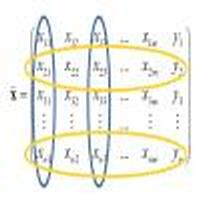当前位置:
X-MOL 学术
›
Adv. Opt. Photon.
›
论文详情
Our official English website, www.x-mol.net, welcomes your
feedback! (Note: you will need to create a separate account there.)
Optical security and authentication using nanoscale and thin-film structures
Advances in Optics and Photonics ( IF 25.2 ) Pub Date : 2017-03-28 , DOI: 10.1364/aop.9.000218 Artur Carnicer , Bahram Javidi
Advances in Optics and Photonics ( IF 25.2 ) Pub Date : 2017-03-28 , DOI: 10.1364/aop.9.000218 Artur Carnicer , Bahram Javidi

|
Authentication of encoded information is a popular current trend in optical security. Recent research has proposed the production of secure unclonable ID tags and devices with the use of nanoscale encoding and thin-film deposition fabrication techniques, which are nearly impossible to counterfeit but can be verified using optics and photonics instruments. Present procedures in optical encryption provide secure access to the information, and these techniques are improving daily. Nevertheless, a rightful recipient with access to the decryption key may not be able to validate the authenticity of the message. In other words, there is no simple way to check whether the information has been counterfeited. Metallic nanoparticles may be used in the fabrication process because they provide distinctive polarimetric signatures that can be used for validation. The data is encoded in the optical domain, which can be verified using physical properties with speckle analysis or ellipsometry. Signals obtained from fake and genuine samples are complex and can be difficult to distinguish. For this reason, machine-learning classification algorithms are required in order to determine the authenticity of the encoded data and verify the security of unclonable nanoparticle encoded or thin-film-based ID tags. In this paper, we review recent research on optical validation of messages, ID tags, and codes using nanostructures, thin films, and 3D optical codes. We analyze several case scenarios where optically encoded devices have to be authenticated. Validation requires the combined use of a variety of multi-disciplinary approaches in optical and statistical techniques, and for this reason, the first five sections of this paper are organized as a tutorial.
中文翻译:

使用纳米级和薄膜结构的光学安全和认证
编码信息的认证是目前光学安全领域的流行趋势。最近的研究提出使用纳米级编码和薄膜沉积制造技术生产安全的不可克隆 ID 标签和设备,这些技术几乎不可能伪造,但可以使用光学和光子学仪器进行验证。目前的光学加密程序提供了对信息的安全访问,并且这些技术每天都在改进。然而,有权访问解密密钥的合法收件人可能无法验证消息的真实性。换句话说,没有简单的方法可以检查信息是否被伪造。金属纳米粒子可用于制造过程,因为它们提供可用于验证的独特极化特征。数据在光域中编码,可以使用散斑分析或椭偏仪的物理特性进行验证。从假样本和真样本中获得的信号很复杂,很难区分。因此,需要机器学习分类算法来确定编码数据的真实性并验证不可克隆的纳米粒子编码或基于薄膜的 ID 标签的安全性。在本文中,我们回顾了使用纳米结构、薄膜和 3D 光学代码对消息、ID 标签和代码进行光学验证的最新研究。我们分析了必须对光学编码设备进行身份验证的几种情况。验证需要结合使用光学和统计技术中的各种多学科方法,因此,
更新日期:2017-03-28
中文翻译:

使用纳米级和薄膜结构的光学安全和认证
编码信息的认证是目前光学安全领域的流行趋势。最近的研究提出使用纳米级编码和薄膜沉积制造技术生产安全的不可克隆 ID 标签和设备,这些技术几乎不可能伪造,但可以使用光学和光子学仪器进行验证。目前的光学加密程序提供了对信息的安全访问,并且这些技术每天都在改进。然而,有权访问解密密钥的合法收件人可能无法验证消息的真实性。换句话说,没有简单的方法可以检查信息是否被伪造。金属纳米粒子可用于制造过程,因为它们提供可用于验证的独特极化特征。数据在光域中编码,可以使用散斑分析或椭偏仪的物理特性进行验证。从假样本和真样本中获得的信号很复杂,很难区分。因此,需要机器学习分类算法来确定编码数据的真实性并验证不可克隆的纳米粒子编码或基于薄膜的 ID 标签的安全性。在本文中,我们回顾了使用纳米结构、薄膜和 3D 光学代码对消息、ID 标签和代码进行光学验证的最新研究。我们分析了必须对光学编码设备进行身份验证的几种情况。验证需要结合使用光学和统计技术中的各种多学科方法,因此,











































 京公网安备 11010802027423号
京公网安备 11010802027423号